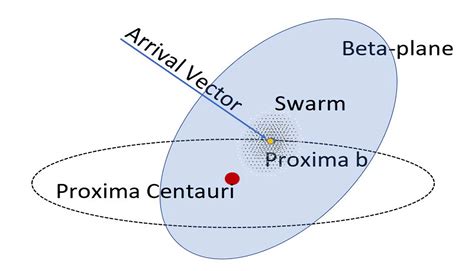The idea of deploying picospacecraft swarms to journey across interstellar distances has captivated the imaginations of many, raising both enthusiasm and skepticism within the scientific community. The notion of launching gram-scale probes propelled by laser light presents a revolutionary approach to space exploration, challenging the limits of current technology and our understanding of the universe.
One of the key debates surrounding this concept revolves around the synchronization and coordination of these tiny spacecraft over vast distances. The comments highlight concerns about maintaining precise positioning and communication among the swarm members as they navigate through the cosmos. The intricacies of managing a large number of autonomous probes to work together as a cohesive unit present a formidable technological and logistical challenge.
Furthermore, the discussion delves into the potential of laser propulsion as a means to accelerate these picospacecraft to relativistic speeds. The exchange contemplates the energy requirements, material limitations, and engineering hurdles involved in harnessing laser beams for both power supply and propulsion. The complexities of beam management, attenuation, and coherence over extensive distances add layers of complexity to the proposed mission.
As enthusiasts envision the possibilities of picospacecraft swarms reaching neighboring star systems, skeptics point out the practical obstacles and theoretical limitations that may hinder such ambitious endeavors. Questions arise regarding the feasibility of maintaining formation, executing maneuvers, and conducting scientific investigations across interstellar voids with such small and lightweight probes.
Moreover, the dialogue extends beyond technical aspects to explore the broader implications and motivations behind interstellar exploration. Participants reflect on the role of artificial intelligence, the value of scientific curiosity, and the coordination needed for collaborative space initiatives. The juxtaposition of innovative concepts with practical constraints offers a glimpse into the intricacies of pushing the boundaries of space exploration.
From considerations of laser beam divergence to discussions on interstellar drag dynamics, the discourse spans a wide spectrum of scientific, engineering, and philosophical dimensions. The interplay between theoretical speculation and practical implementation underscores the intricate balance between ambition and realism in shaping the future of space travel.
The exchange of ideas regarding picospacecraft swarms not only showcases the diversity of perspectives within the scientific community but also underscores the collective fascination with exploring the cosmos. The challenges and possibilities discussed in these comments epitomize the spirit of innovation and inquiry that drives humanity’s quest to unravel the mysteries of the universe.
While the concept of interstellar picospacecraft swarms may currently reside at the intersection of science fiction and scientific inquiry, the ongoing discussions serve as a testament to humanity’s enduring curiosity and ambition. Whether contemplating the intricacies of laser propulsion or pondering the complexities of interstellar navigation, the dialogue surrounding this visionary concept embodies the relentless pursuit of knowledge and exploration.
In conclusion, the prospect of swarming picospacecraft journeying through the vast expanse of interstellar space ignites a sense of wonder and possibility that transcends traditional boundaries of space exploration. As visionaries and skeptics engage in dialogue, the evolving narrative of picospacecraft swarms offers a glimpse into the boundless potential and profound challenges that lie ahead in our quest to reach the stars.


Leave a Reply